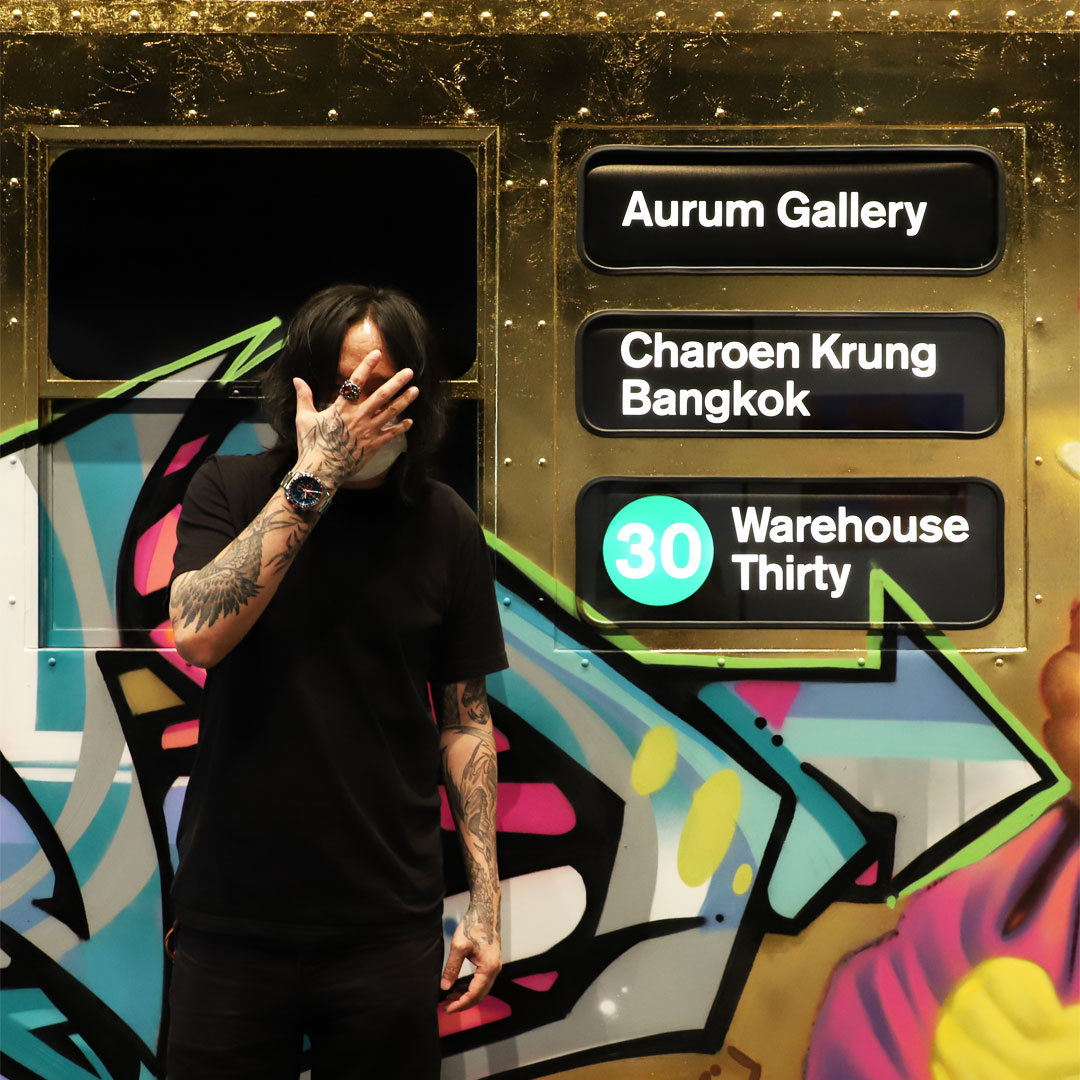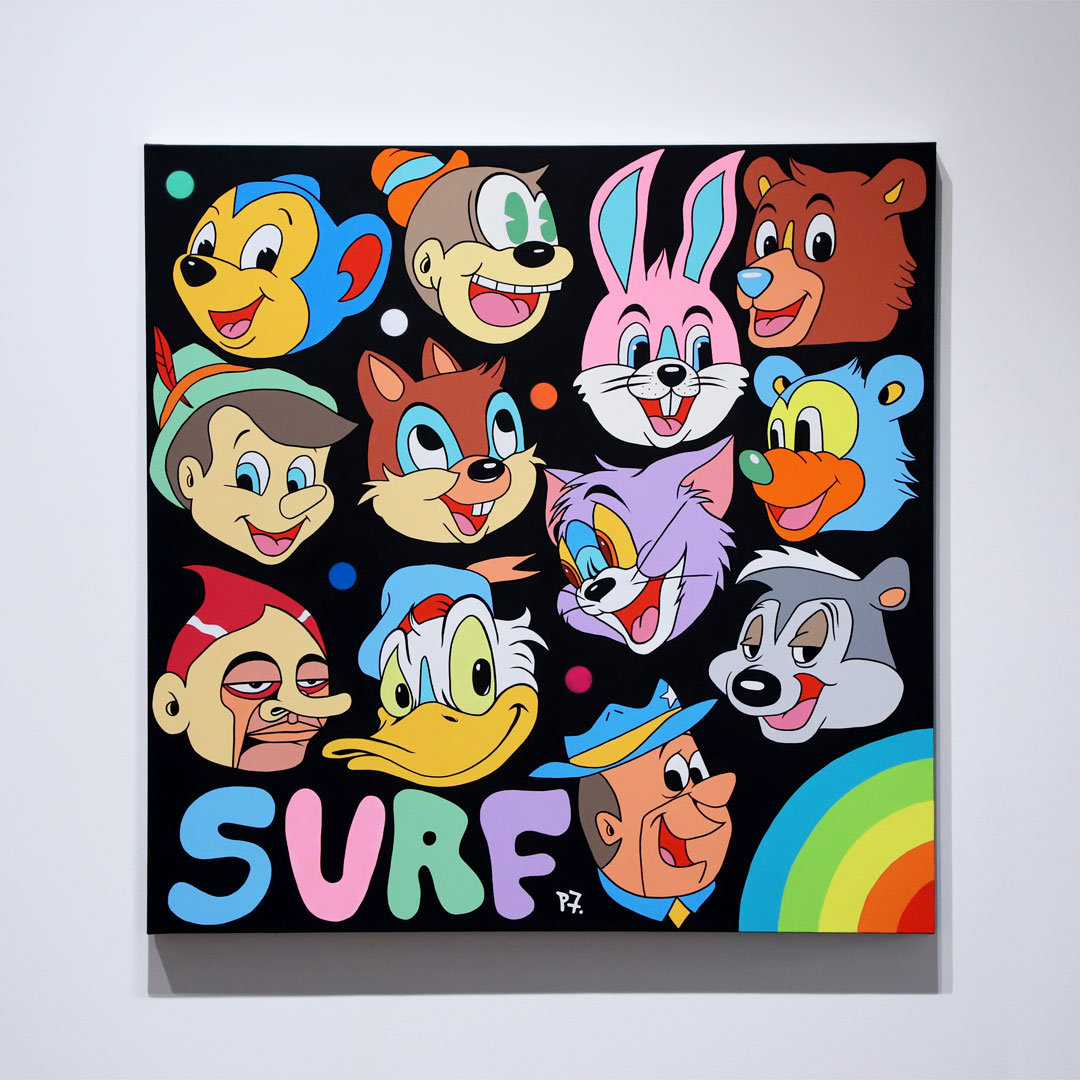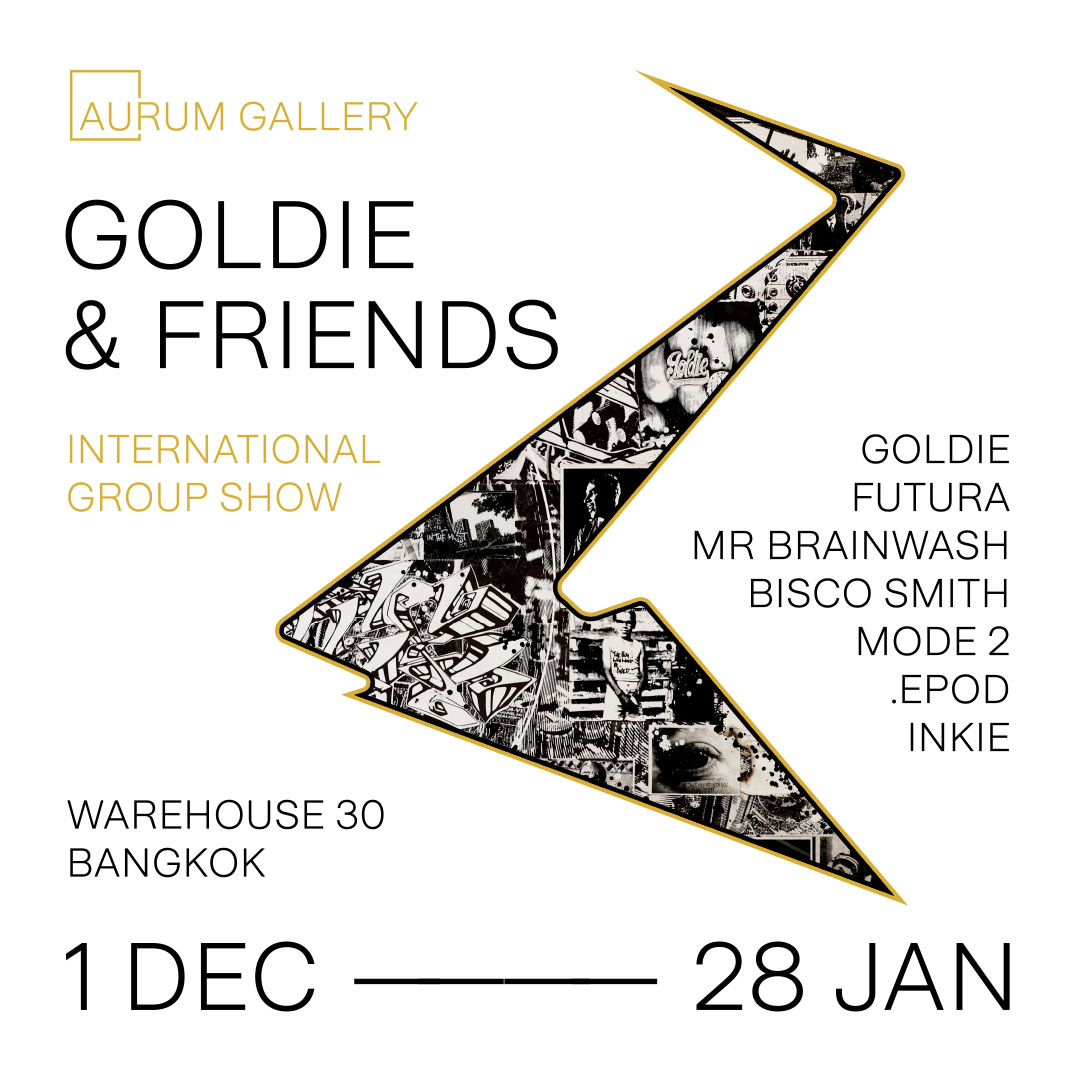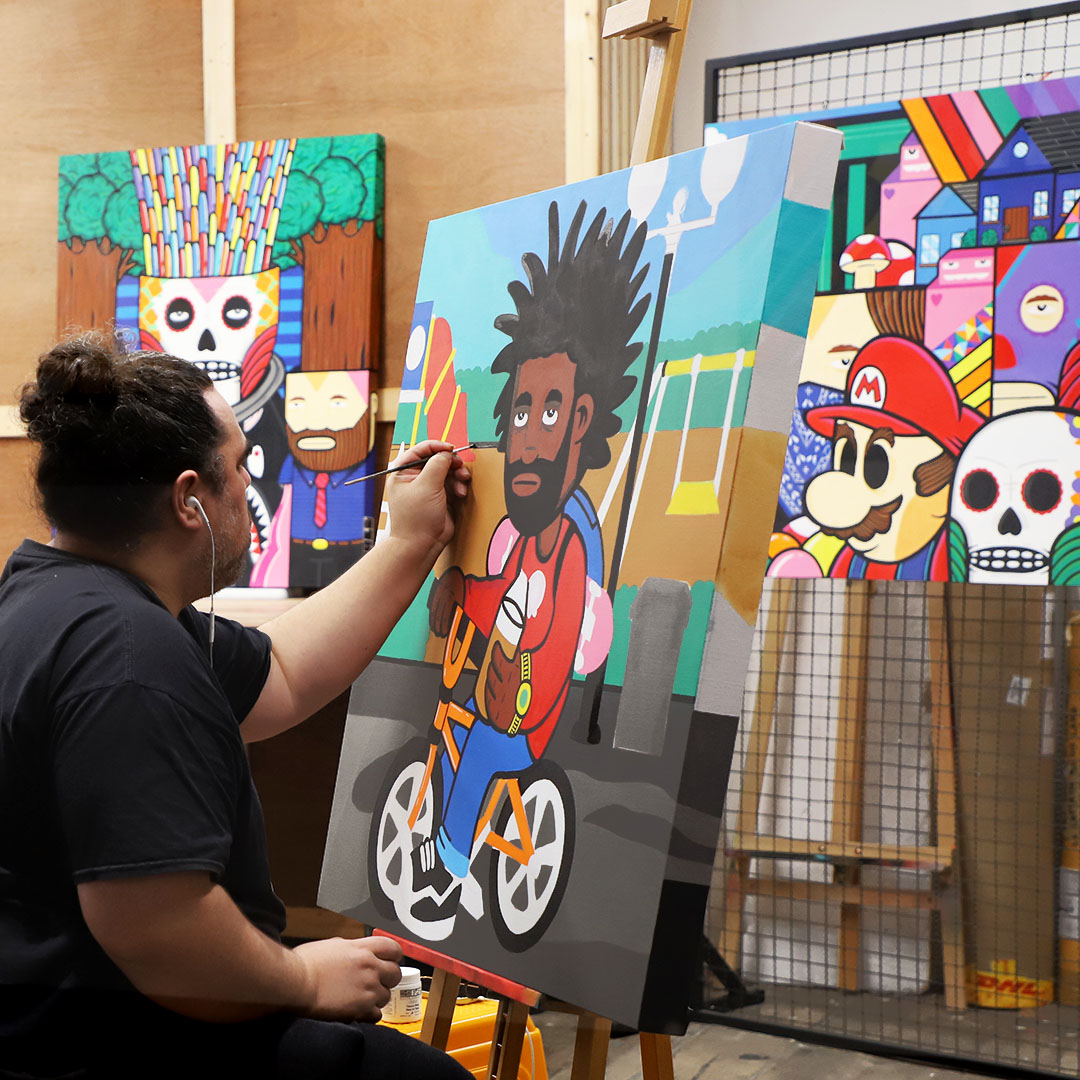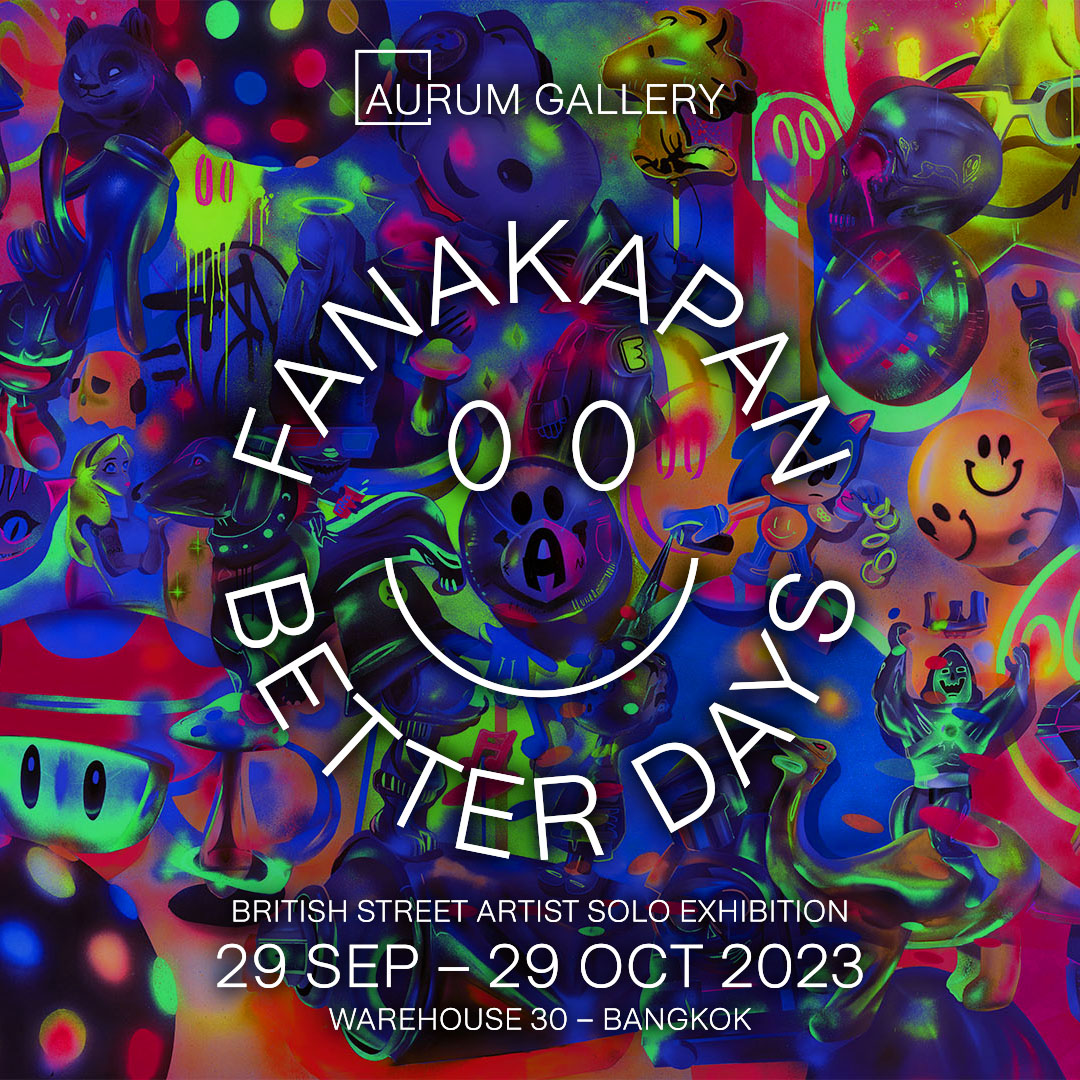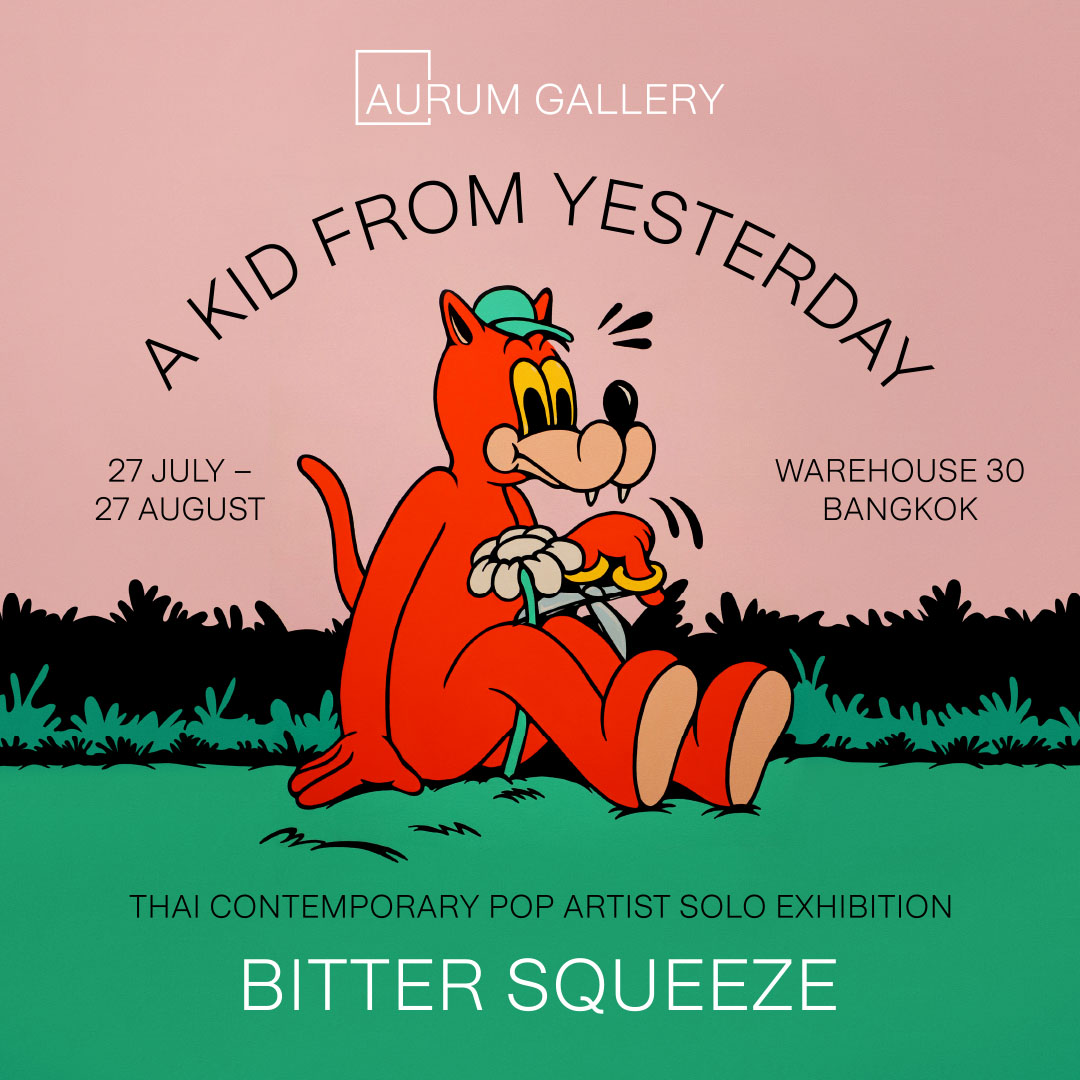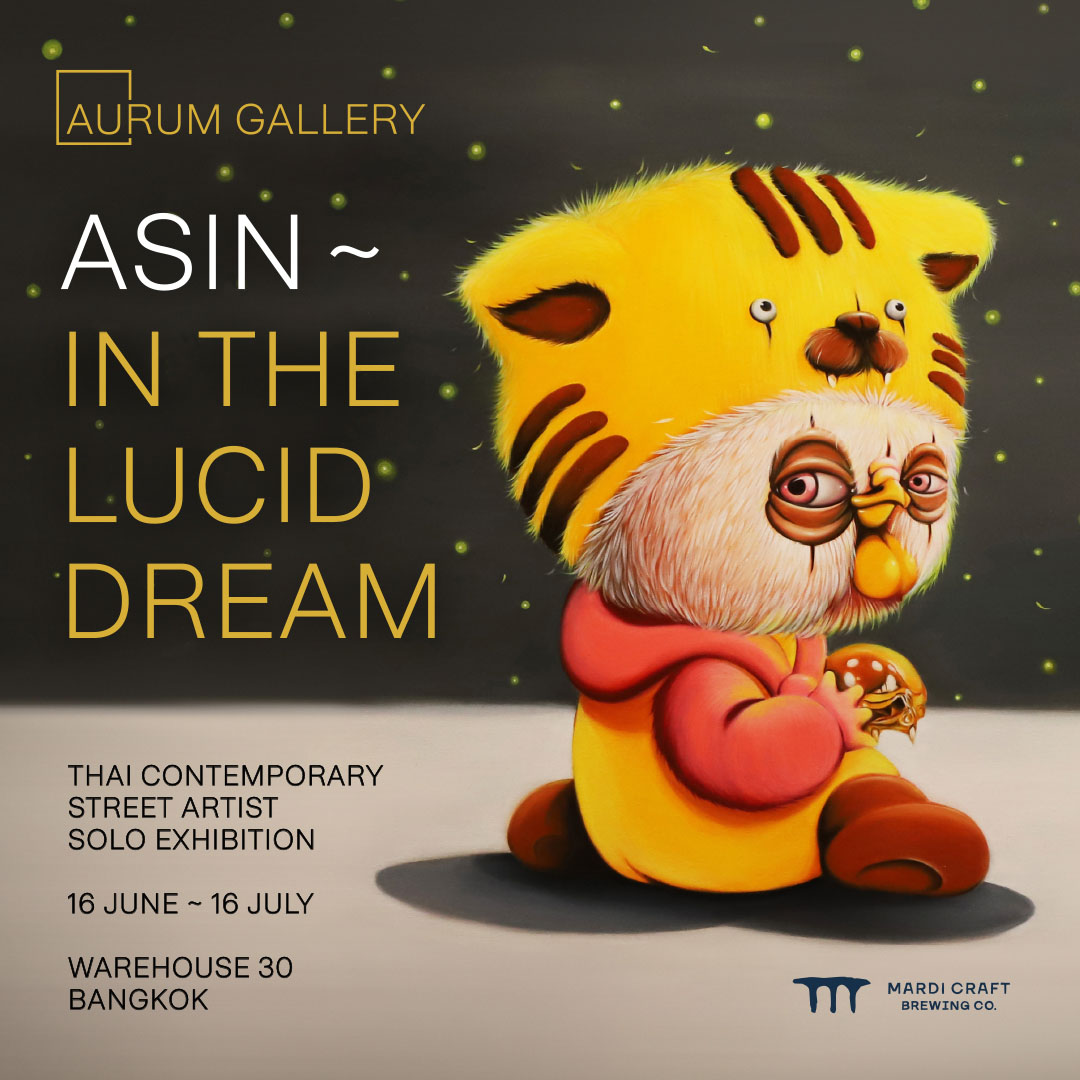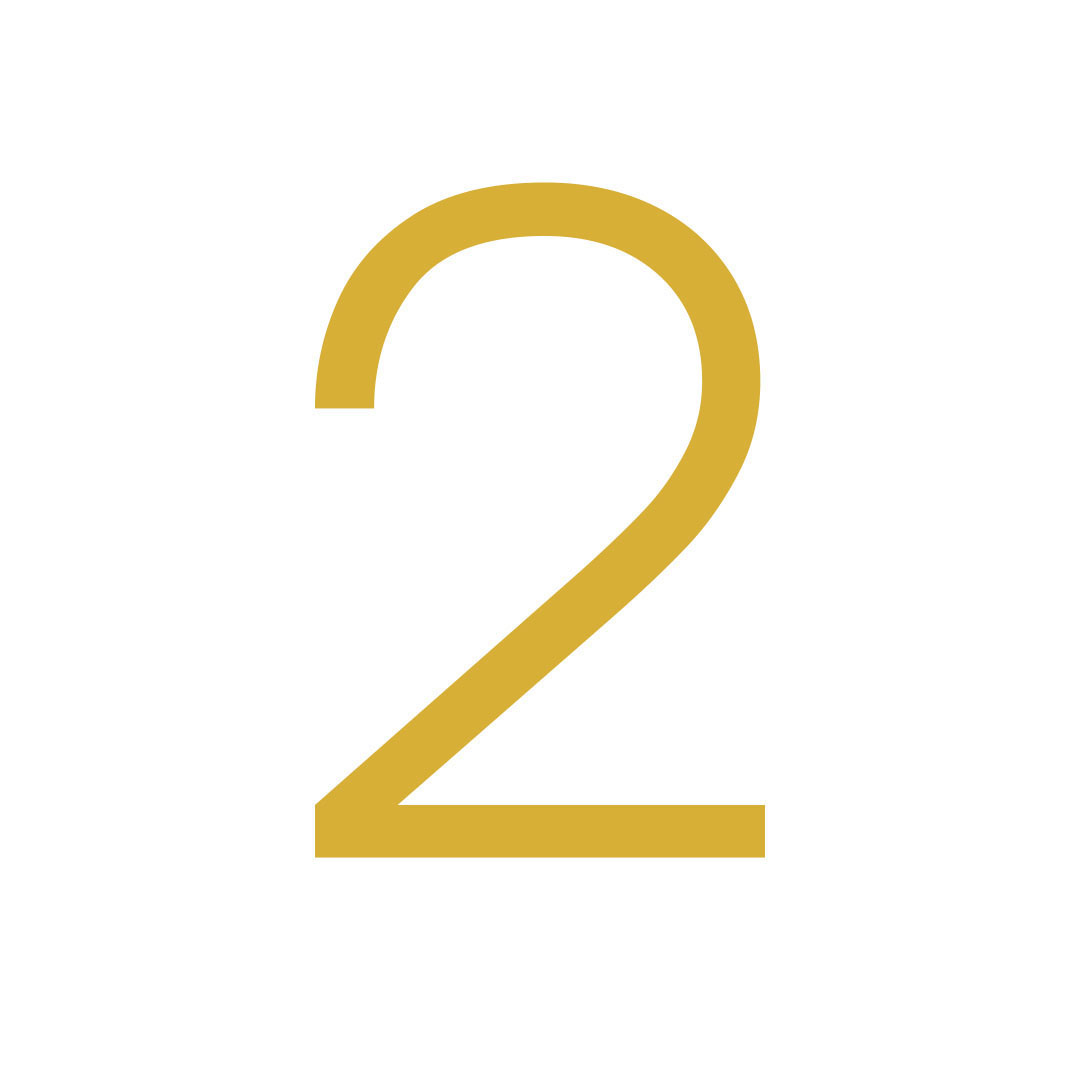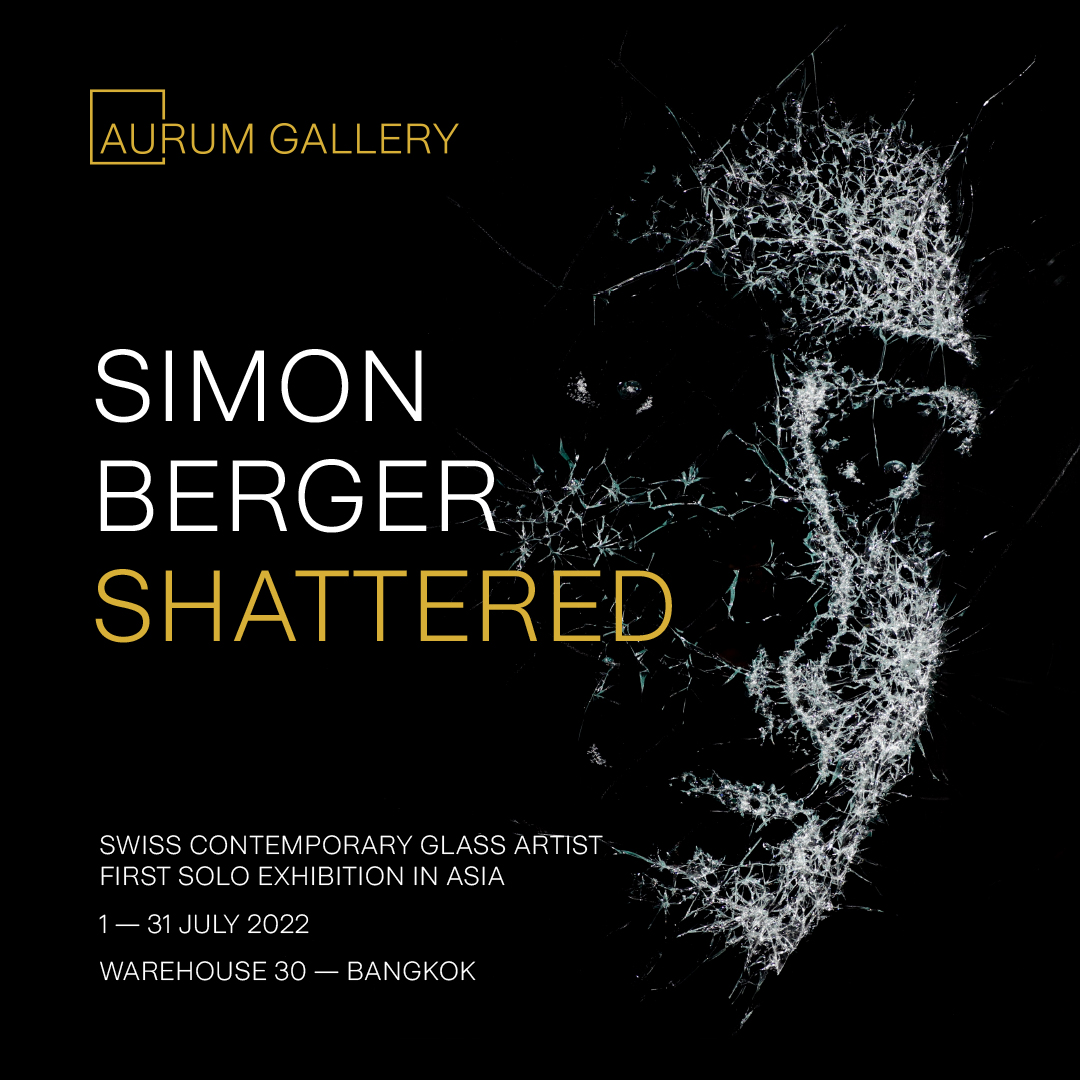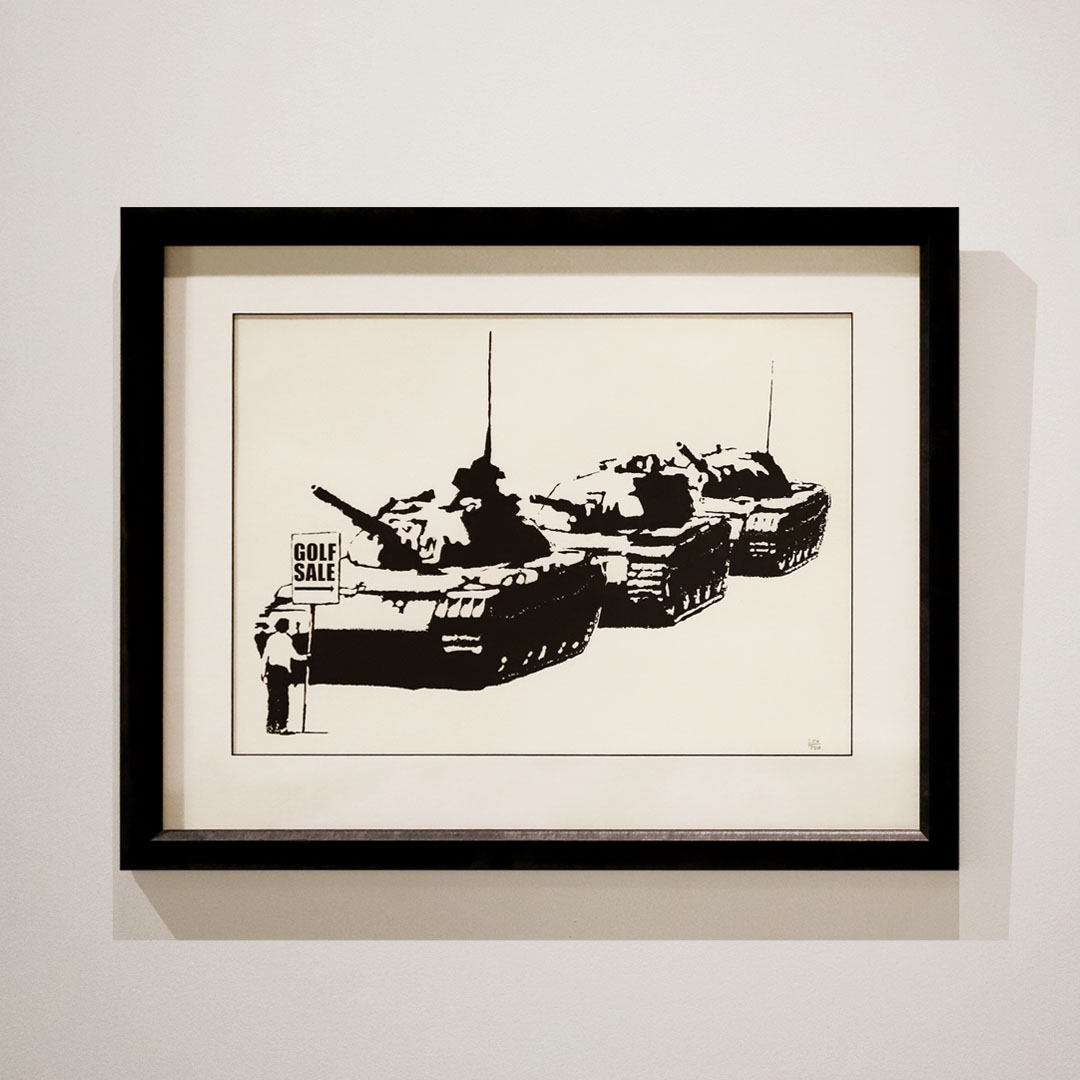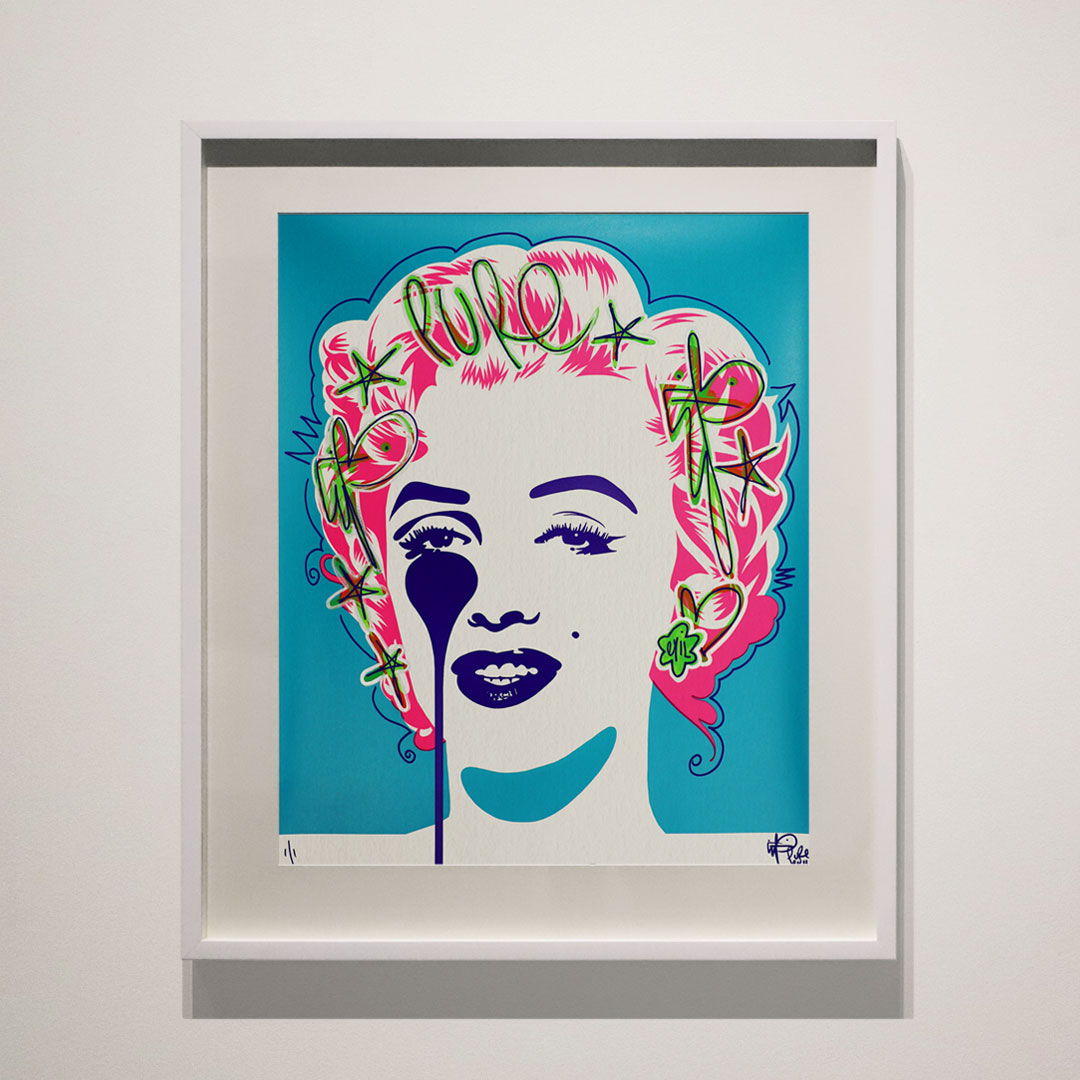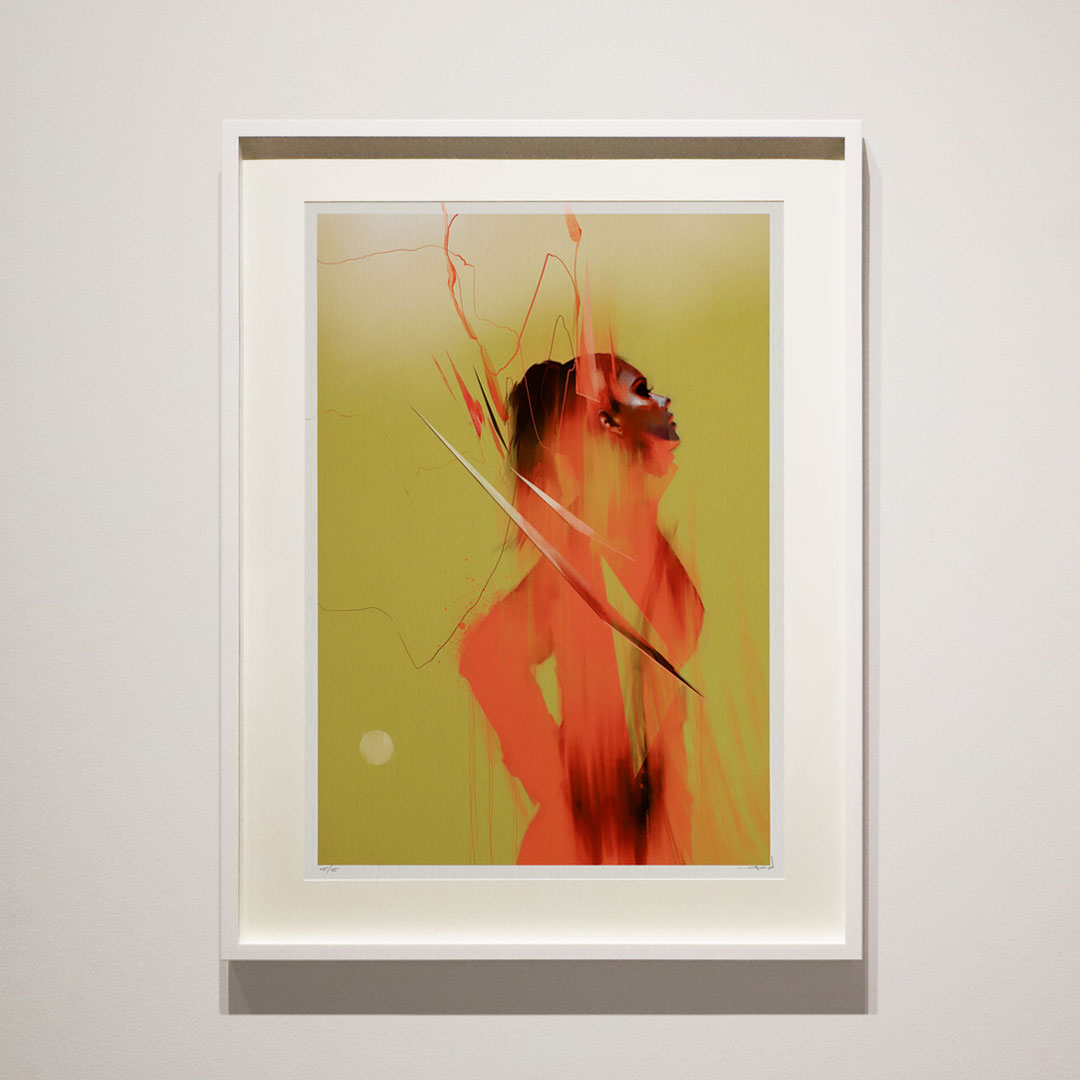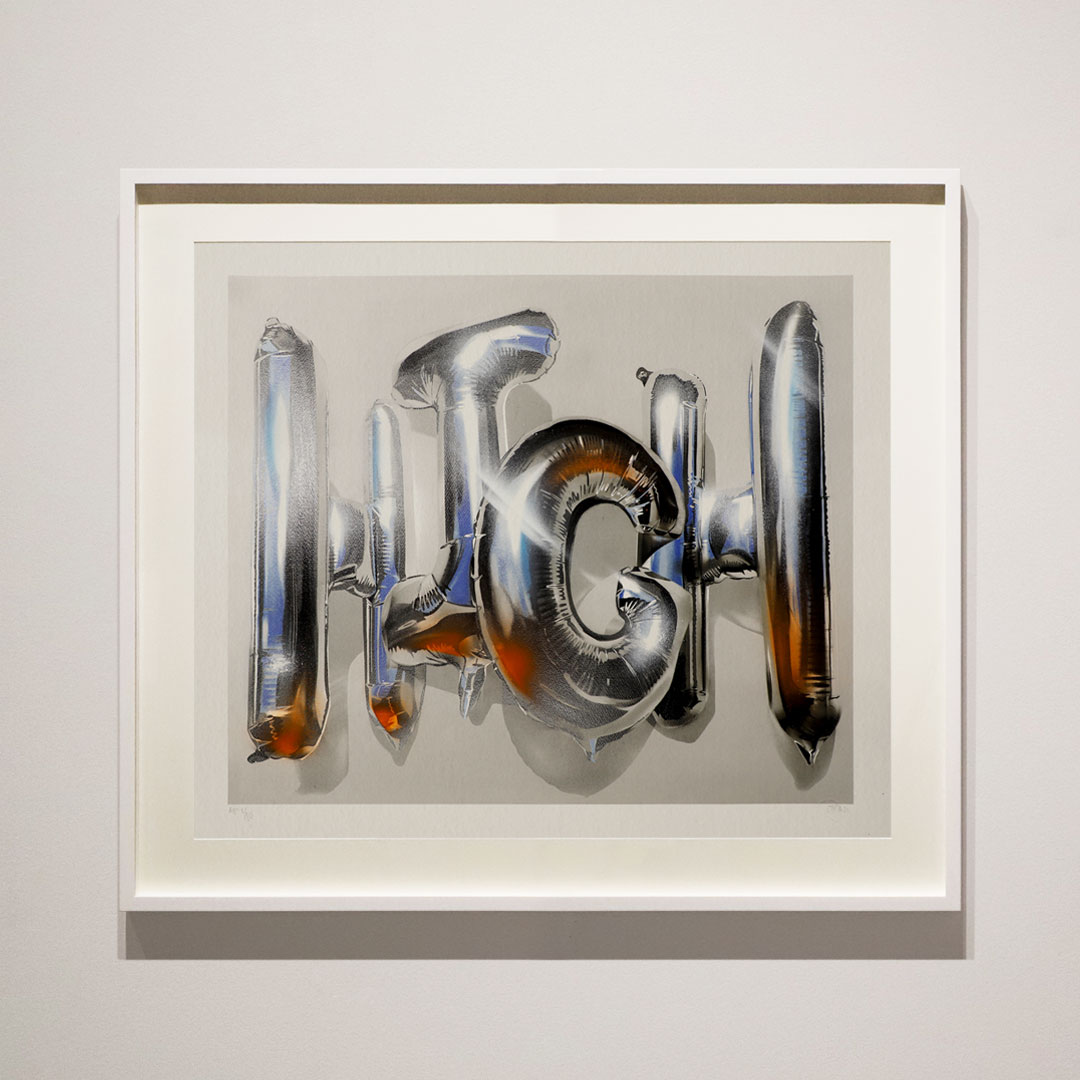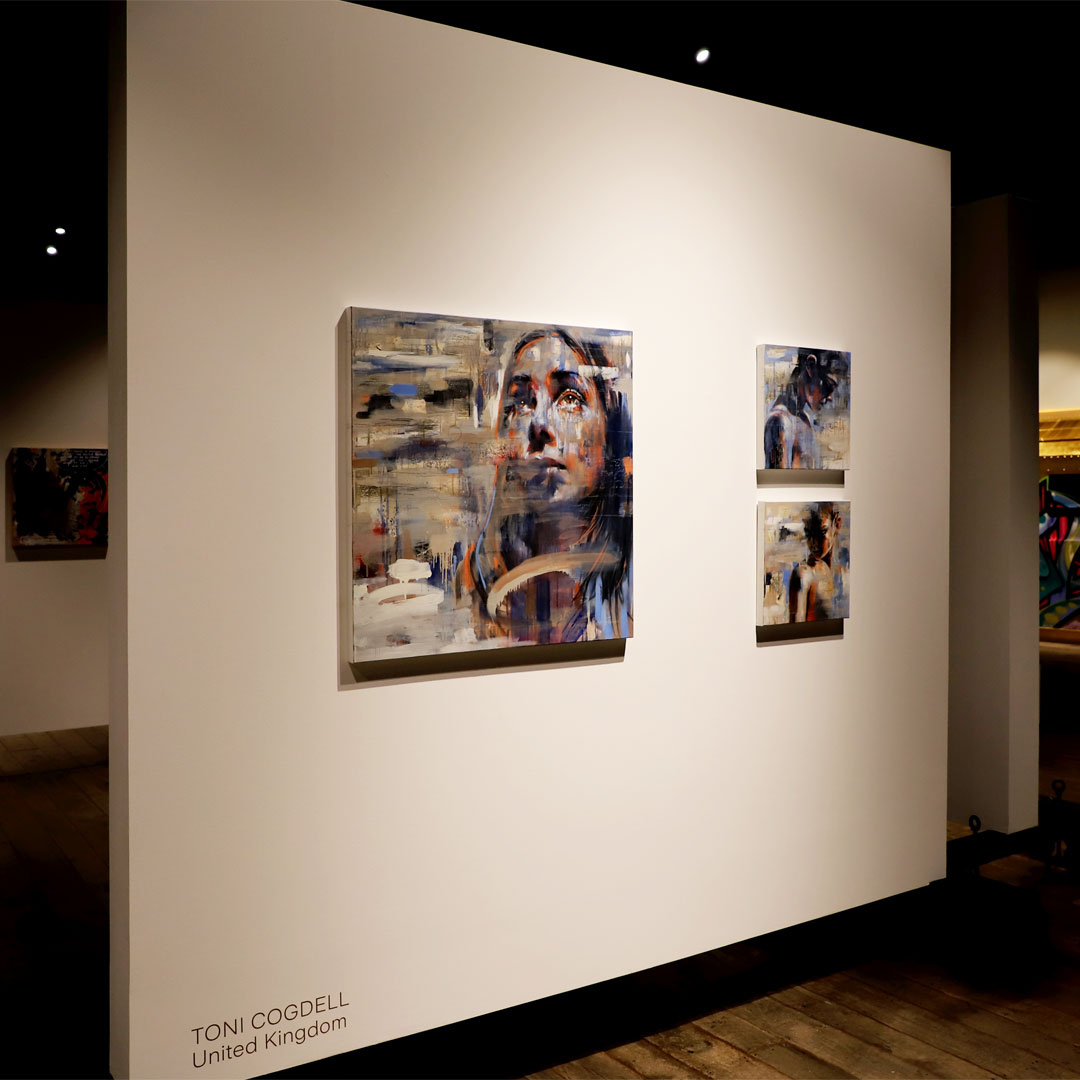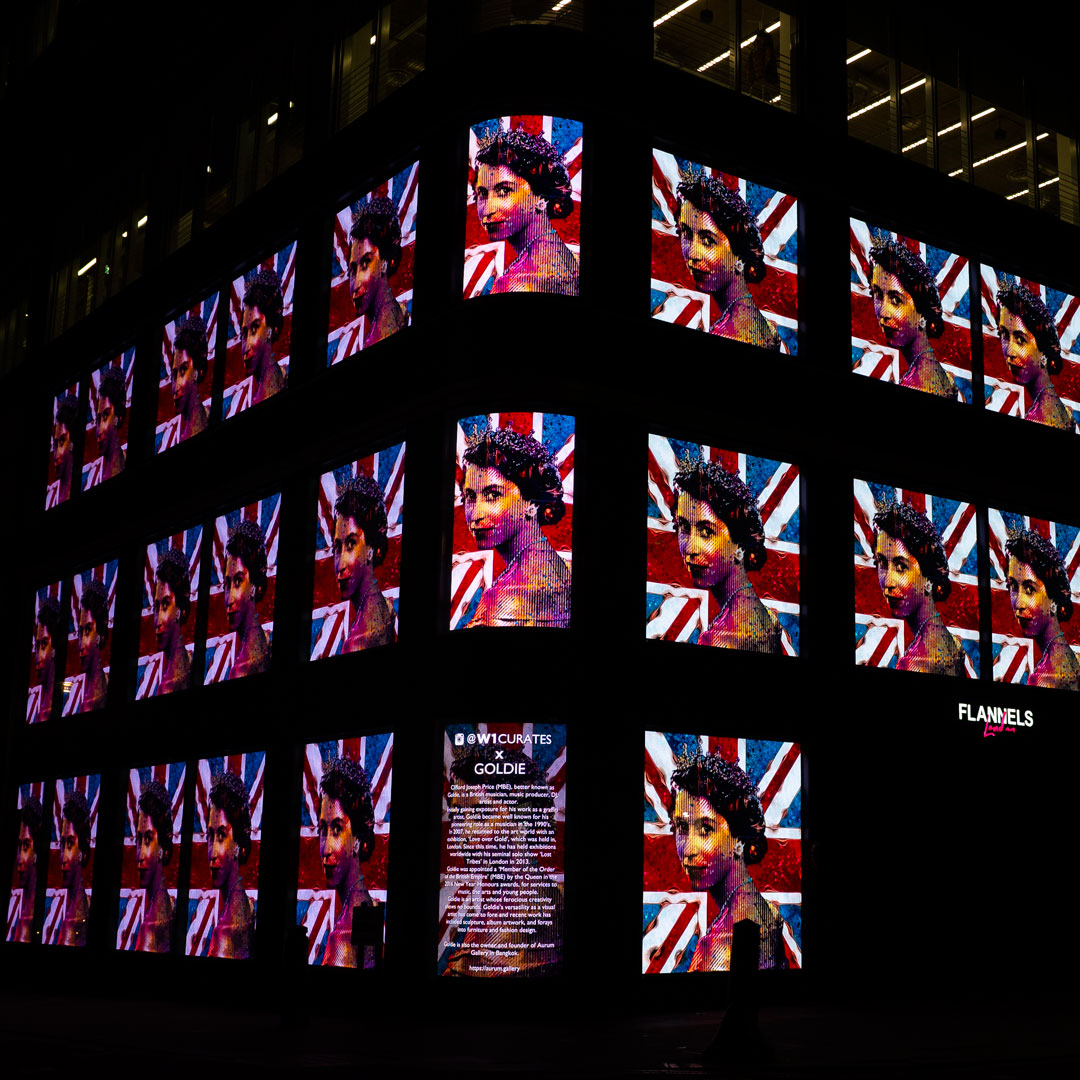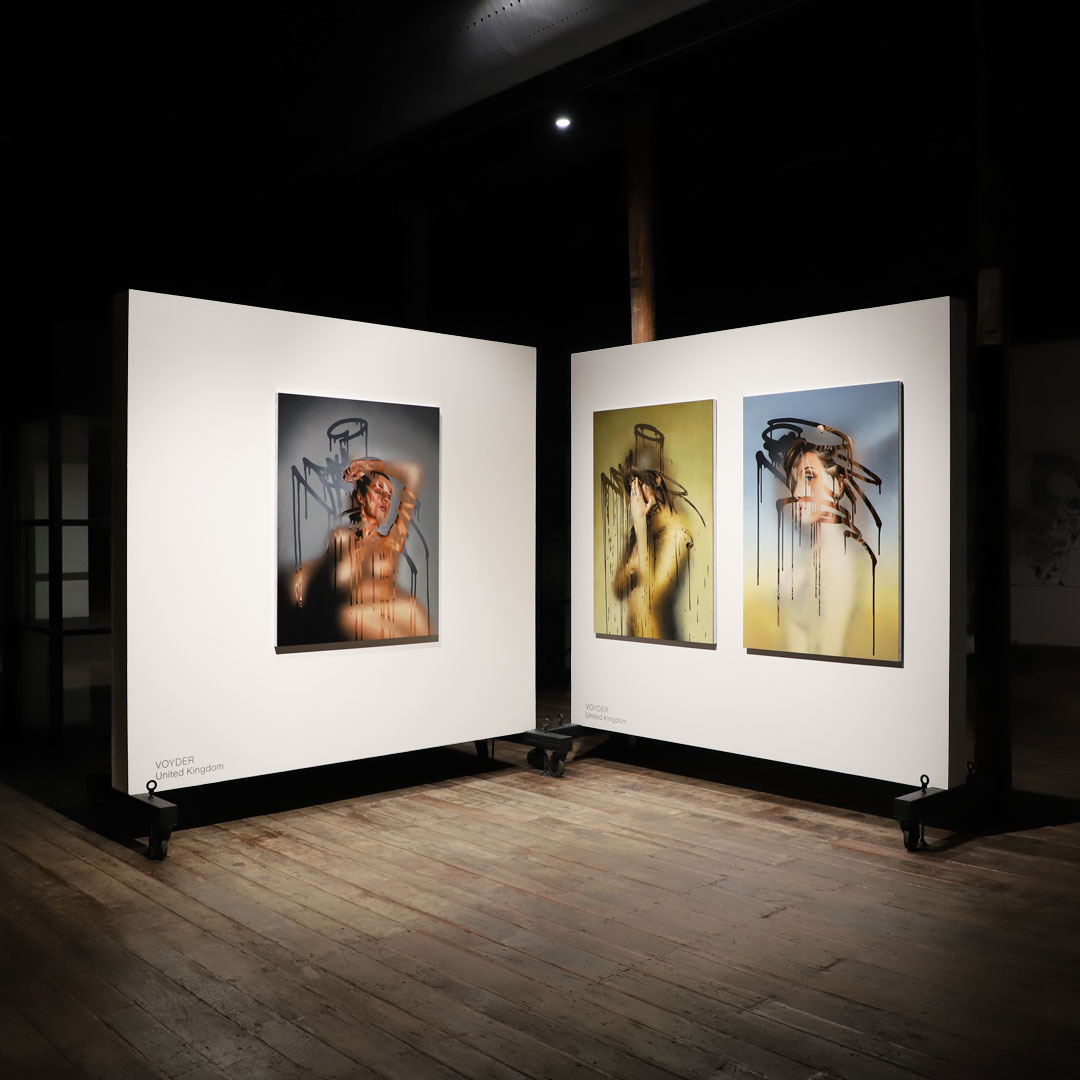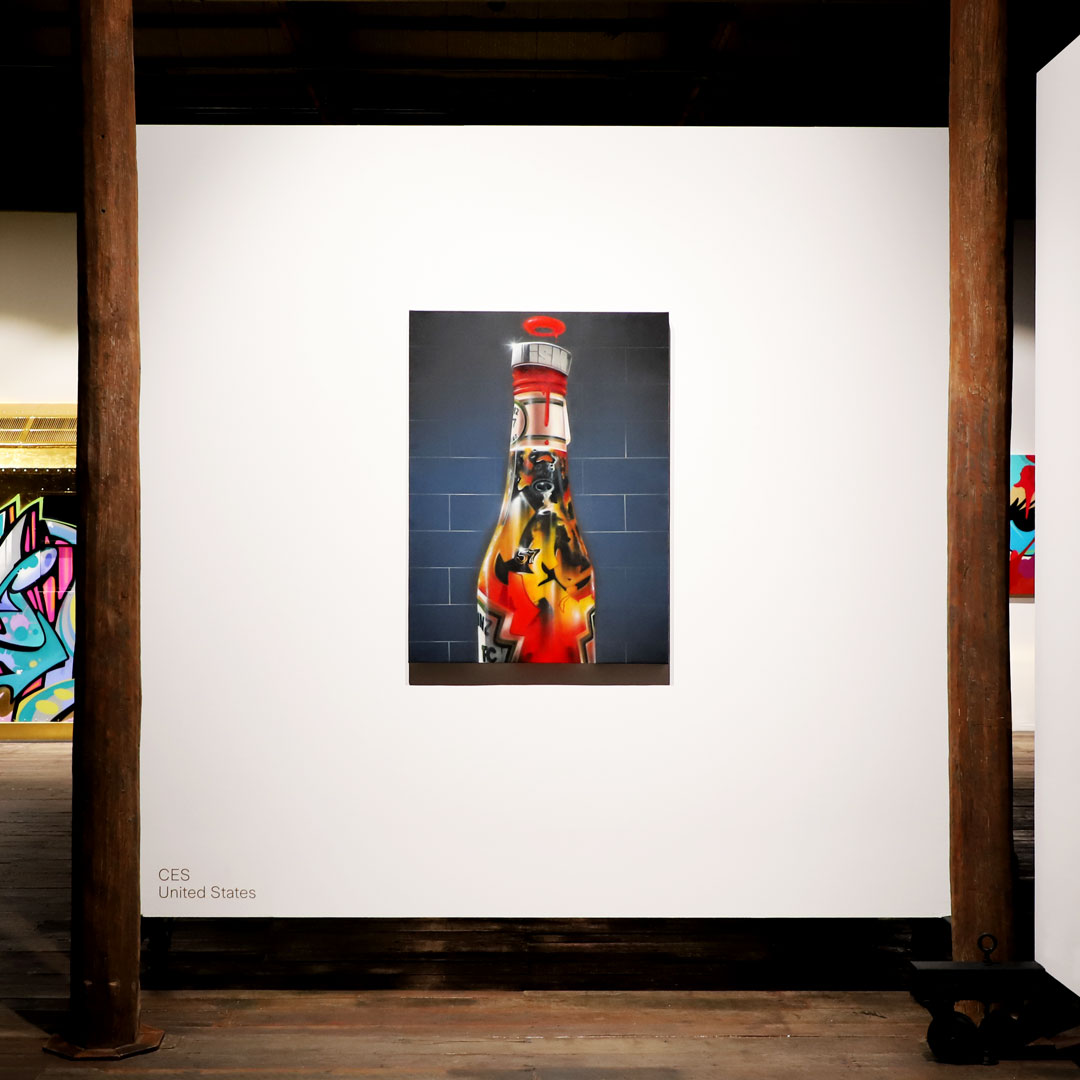INTERVIEW WITH P7
15/09/2020
P7 is a renowned Thai artist, well-known for his works in the contemporary art field but also recognised as a pop/street artist. Aurum Gallery is honoured to exhibit P7’s works as part of our collection, and we sat down with him to get to know the man behind the art.
AU: What are the origins and importance of the characters you have designed? Some are familiar cartoon characters whilst others have a more mixed form which could be called hybrid characters.
P7: The symbols and characters I have created have never been repeated in my whole career as an artist, almost two decades of it. I don’t repeat any of my characters because I feel that in art, it is not necessary to create specific characteristics or traits for each piece of work. Contemporary art opens up opportunities for an artist to create non-stop. Coming up with characters is only one part of my painting process, which reflects a contemporary style. I like design, and I like to record down all the characters I design, however I don’t know how to do it digitally, so every record is made through thinking and drawing. The designs all come out differently, but some characters were created with satire of existing concepts in mind, so that’s what you would call a hybrid character. That was my intention, to poke fun at existing things, but I design the characters in a way to add my own context, perspective and emotions. This is an artistic element of my paintings, but not the main focus, because my work encompasses many creative elements to make it whole.
AU: We’re very excited about your latest solo exhibition “Shadow on the sun” which was previously shown at Artist+Run. Many people may already know that you are interested and skilled at realistic drawings, but when we went to see your exhibition, we were still amazed at your craftsmanship.
P7: Actually, that’s what I’m most skilled at – I started exhibiting in 1998, beginning with that style (realistic drawings), but maybe not as complicated, it was mainly a realistic style that I invented. You can see in my older eras that my works followed the same composition. As I started exhibiting solo more, I continued with that style but threw in street art, to mix it up a bit.
AU: From reading interviews and articles, we learned that you are fascinated by Dutch artist Rembrandt’s portraits. Your early years also seem to reflect that super realistic process.
P7: Yes, I’ve liked realistic art from a young age and I am a fan of Rembrandt’s works. But I didn’t want my work to have the same characteristics as his – I wanted to know and understand how he drew his portraits, and so I taught myself how to draw them. I didn’t learn from a classroom because that kind of teaching does not go into enough depth and details. So I decided to study classical artists myself, which influenced the early era of my career. After finishing my studies, I had the opportunity to work with P’Tao 65, who was the owner of a company that produced super realistic images for advertisements. Back then, there were no computers, so all the work produced for ads had to be super realistic – it was a time where the global advertising industry favoured airbrushing and painting, so we had to learn how to paint super realistically within 3 years. Every job I received, I had to know how to paint every single thing in a hyper realistic way – not just in how it looked but it had to evoke a sense of realism, the same way that can be perceived from a photograph.
AU: Listening to you, it seems that you combined your interests, personal training and your work experiences to push yourself towards improving your skillset in creating realistic artworks.
P7: Yes, but I thought about more than that. Because there are so many people who are good at drawing – I thought to myself, how can I differentiate myself? What do I do to draw well and come up with my own style? So I practised a lot and it helped that I was learning how to create super realistic pieces at work. Those assignments required more than just realistic paintings, it had to look almost like a photograph, so I definitely gained skills from that. But I was also training in design – I wanted to combine the realistic elements with design. I got the realistic part down and I consider myself lucky that I was also interested in design. I’m not someone who only uses my hands to create – creativity is not only your physical skills, it’s also your design mindset. That’s what sets me apart.
AU: What was the catalyst that led to the change in your realistic style of art? The reduction of details, when was the starting point of your creations within graffiti?
P7: Honestly, it didn’t really change. I wanted to put my work out on the streets, so I thought about whether to put realistic pieces or more design-forward pieces. I decided to reduce the details a bit. At the beginning, there was still a bit of realism, but cut down to less details and I changed the composition to a more graphic style. So, the realism component was still kept for usage, but with more focus on the design elements. Back then around my house and studio, there was no street art and I wanted to take my clean style of work and put them against the old walls along the streets . This desire created a mix of ideas and contrasts. I was also influenced by Dadaism. I felt that my way of thinking matched that of the Dada movement – the absence of reason in creativity – so I began creating works without structure or format, more creative freedom.
AU: How do you feel about exhibiting in galleries, whilst other street artists still work predominantly on the streets and refuse to show at galleries?
P7: International graffiti artists have entered galleries naturally and for a long time already. It honestly depends on the person. It’s not an uncommon thing, and it depends on the artists’ quality of work. To paint on the streets and then have to paint on a canvas, can the artist control their quality of work on the canvas? Is their work clear and clean? I think you have to create good graffiti work on the streets first – once you hone that skill, then you can start thinking about gallery work. For me, in the end, the principle or purpose is meaningless compared to the quality of work put out. All you need is a style that elevates the streets and good techniques… that’s it. You can be successful, just make sure you know how to stand out, check your skills, check your techniques – are they good enough? Most people may look at the big picture and not the technique. Nowadays, we see artists with minimal technical skills and they only focus on the overall picture – they create memorable characters and stop there. A lot of people look past techniques in street art, but really, it’s a crucial part because your techniques are an indication of your quality of work.
AU: What’s your view on street art in Thailand?
P7: There’s a lot more street art and graffiti in Thailand. But everyone needs to be attentive and dare to examine themselves. Check your identity and quality of work – is it good enough? If not, then you must learn, practise and find more experiences. Because everything, art, skills, it’s all important. Can you spray? How do you spray? Can you convey feelings clearly in your work? As for my opinion on Aurum Gallery, I see it as a gallery that presents contemporary visual art painting, and it is up to the gallery on which direction they want to go. Some pieces have fine art characteristics and if you want to present fine art, they must have a creative perspective, and not be for decorative or illustrative purposes.
My work is called ‘HAND PAINT POP’ where the work is mainly composing elements of art (i.e. painting) and has skills to support it, with a design perspective woven in. To be contemporary, you must have both painting and design.
I want the audience to see what HAND PAINT POP is. I work, I don’t skate, I don’t have a set workload (referring to the Dada concept), no limit to how many pieces I create. I draw and paint to show my work and think about the gallery space at the same time. I don’t need to cram in too much work, I don’t focus on the quantity. I emphasise on the elements of art installation as well – the works have to present well, post-installation. For me, a gallery or exhibition space is like another piece of painting. Whilst I create each piece, I always keep in mind how I would arrange and display it. The actual painting is the installation of the work on the wall. You need creativity in that area too.
AU: Besides Rembrandt and classical artists, who are you inspired by?
P7: I don’t have any! I don’t really focus on people. I might be impressed by certain artists’ body of work but I don’t consider anyone to be a favourite artist or inspiration. I think it’s because I’m self-motivated, I want to create quality work, I want to use my design thinking at 100%, and my skills at 100%. Take my new pieces for example, it’s a graphic style, true, but I used my skills in realistic painting, colour combination, colour search, colour intensity, and brush usage, as a graphic technique. With street art, my process includes producing clean colours, cutting smooth lines and incorporating a design function. All of this comes automatically to me, no matter what piece I work on. I mainly do neat pieces, but if I want to make more textured pieces, I can do that too. It depends on the context and feeling, and what I want each piece to be. It stems from a deep understanding and attention to details. Ever since I was a kid, I’ve never set boundaries in my work. I view that as a privilege, to not have borders or frames, because it allows me to do whatever I want. But each and every action and thought I take, I need to know how to control it to make the outcome quality. Not control in a way where I regulate, because my works have no regulations or restrictions, and you can see that very clearly. But the technique and creativity have to be unique. I don’t like to follow trends – today I might do a graphic format, tomorrow I might return to HAND PAINT POP. But I know there will always be new forms happening continuously, because I allow my creativity to go hand in hand with my thoughts, which are never fixed and never stand still.
It was a pleasure to speak with P7 and get to know his thoughts and motivations better. We visited his starting point and identity before becoming P7, the artist that everyone knows and admires in the design and art world. After our discussion, we found P7 to be a contemporary artist with a very clear purpose, both in his way of thinking and quality of works he produces. He has a self-driving force and a strong desire to communicate his ideas. The way he conveys his thoughts and evokes feelings in his works leaves us without any doubts on his success and reputation. You can view P7’s artworks that are exhibiting with us at Aurum Gallery’s website and on our Artsy page.
To read the interview in Thai, please view on Facebook.
PART 1 / PART 2 / PART 3

